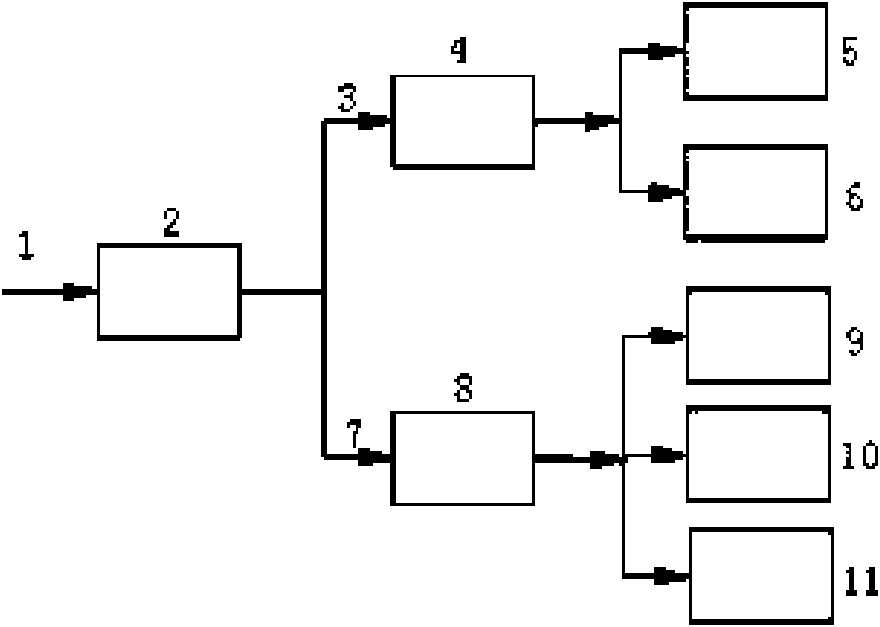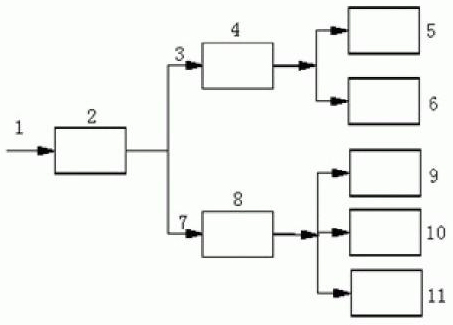Method for processing sludge pyrolytic oil
A processing method and pyrolysis oil technology, applied in the direction of hydrocarbon oil dehydration, vacuum distillation, etc., can solve the problems of reducing particle concentration, high cost, affecting other properties of oil, etc., and achieve the effect of simple operation and low cost
- Summary
- Abstract
- Description
- Claims
- Application Information
AI Technical Summary
Problems solved by technology
Method used
Image
Examples
Embodiment 1
[0019] Such as figure 1 As shown, the sludge pyrolysis oil 1 is introduced into the distillation dehydration device 2. The device 2 is connected with a temperature measuring and condensing device (not shown in the figure), and the condensing medium is cold water at about 20°C (not shown in the figure). Turn on the electric heater, and as the temperature rises, substances in the oil continue to volatilize until the temperature rises to 120-140°C. Reduce the heating power and keep the temperature for 1-3 minutes to ensure that all the water is evaporated. The steamed water and The mixture 3 of gasoline-like components is recycled to the multi-production outlet separation device 4 through condensation (this separator is placed vertically and statically, which can prevent oil and water from remixing), and water 5 and gasoline-like components 6 are obtained through separation. The residual oil 7 after dehydration in the kettle is introduced into the evaporation kettle of the vacuum...
Embodiment 2
[0022] The treatment process is basically the same as in Example 1, except that the vacuum distillation unit 8 is a continuous operation unit. After dehydration, the remaining oil 7 is continuously introduced into the vacuum distillation tower, the diesel-like component 9 is extracted from the tower top and the waxy component 10 is simultaneously extracted from the tower, and the residual oil 11 is discharged from the bottom of the tower.
[0023] According to Example 2, pyrolysis oil 1 can be cut by fractions to obtain about 25% of 5, about 15% of gasoline-like component 6, about 30% of diesel-like component 9, about 10% of waxy component 10, and residual oil 11 About 20%, of which gasoline-like component 6 and diesel-like component 9 can be directly used as vehicle oil, waxy component 10 can be used as other chemical raw materials, and residual oil 11 can be used as asphalt.
PUM
 Login to View More
Login to View More Abstract
Description
Claims
Application Information
 Login to View More
Login to View More - R&D
- Intellectual Property
- Life Sciences
- Materials
- Tech Scout
- Unparalleled Data Quality
- Higher Quality Content
- 60% Fewer Hallucinations
Browse by: Latest US Patents, China's latest patents, Technical Efficacy Thesaurus, Application Domain, Technology Topic, Popular Technical Reports.
© 2025 PatSnap. All rights reserved.Legal|Privacy policy|Modern Slavery Act Transparency Statement|Sitemap|About US| Contact US: help@patsnap.com


